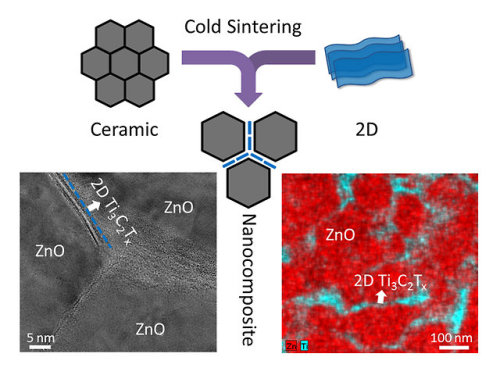#cold sintering
Sintering atomically thin materials with ceramics now possible
For the first time, researchers have created a nanocomposite of ceramics and a two-dimensional material, opening the door for new designs of nanocomposites with such applications as solid-state batteries, thermoelectrics, varistors, catalysts, chemical sensors and much more.
Sintering uses high heat to compact powder materials into a solid form. Widely used in industry, ceramic powders are typically compacted at temperatures of 1472 degrees Fahrenheit or higher. Many low-dimensional materials cannot survive at those temperatures.
But a sintering process developed by a team of researchers at Penn State, called the cold sintering process (CSP), can sinter ceramics at much lower temperatures, less than 572 degrees F, saving energy and enabling a new form of material with high commercial potential.
“We have industry people who are already very interested in this work,” said Jing Guo, a post-doctoral scholar working in the group of Clive Randall, professor of materials science and engineering, Penn State. “They are interested in developing some new material applications with this system and, in general, using CSP to sinter nanocomposites.” Guo is first coauthor on the paper appearing online in Advanced Materials.
Post link

